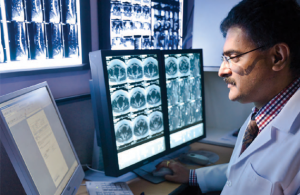Importance of IT systems to overcome challenges:
By 2017, manufacturers will actively channelize 25% of their IT budgets through cloud systems to enable seamless collaboration and flexibility.
In 2015, product quality including compliance was responsible for two-thirds of all IT application investments.
Focus on entrepreneurial manufacturers with FDA- approved products:
There has been a shift away from internal new product development in larger companies towards sourcing opportunities for new products from small entrepreneurial companies in the industry.
Emergence of products for minimally invasive surgeries:
This trend has achieved broad applications and is predicted that it will continue to gain acceptance in orthopedics and other areas of surgery. Thus the Medical Devices industry will create products which would lead to minimal invasion.
US-Europe product introduction swap:
European companies are interested in tapping in the US markets. The regulatory process is less strenuous in European Medical Devices industry. Hence, the European companies seek approval their before ingression in the American markets.
Similarly the smaller US Medical Devices companies are going to European markets to easily obtain the ‘CE Mark’ and gaining clinical experience in Europe before seeking US FDA approval.
China emerging as a medical device player:
Several Chinese manufacturers are trying to secure a foothold in the American Medical Devices industry by acquiring the US manufacturers thus leading to globalization in the American markets.
Medical Devices Volume will increase:
With Patient Protection and Affordable Care Act providing for insurance coverage for millions of more Americans, the volume of medical devices is bound to go up. With more people having access to the traditional healthcare services the overall demand for the Medical Devices is on an exponential rise thus demanding more from the manufacturers.
Need for automation due to the quest for cutting down on jobs:
The American Economic forum predicts the 2.3 percent medical device tax, written into law in the PPACA, will strip the medical device industry of thousands of jobs. Tax and budget constraints may usher in an era of greater efficiency and even spur innovation.
Customer centricity:
Customer centricity will require higher standards for customer service excellence, efficient innovation, and responsive manufacturing which will motivate at least 75% of manufacturers to invest in customer facing technologies.
More advanced diagnostics:
Health care systems in the United States can beyond can cut down costs and improve care by increasing the convenience, speed and accuracy of diagnoses. The manufacturers are churning out products that can make that happen and are also seeking solutions to expedite the diagnoses.

